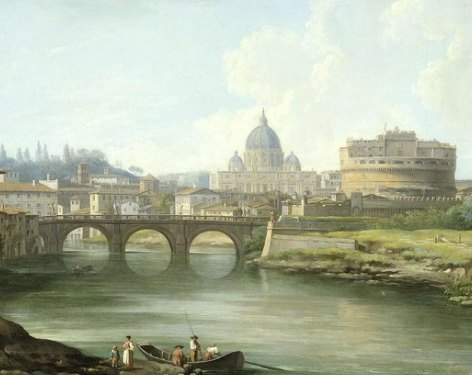Italy is on the verge of opening up their cultural data. However current laws create many challenges. As part of our Tandem-project the Open State Foundation visited Italy to find out if it was possible to open up culture data. Italian cultural heritage is of great importance. As one of the people we spoke to said: ‘Keep in mind, that Rome alone, has more archaeological artefacts then the rest of the world combined.’

In an earlier blog we already wrote about Tandem and our collaboration with the Italian organization Virtutum. In the Netherlands opening up culture data has become easier over time. But in Italy, the birthplace of Roman civilization and the Renaissance, there is not a single Italian cultural institution (owned by government) that actively releases its data as open data.
What is Open Culture Data?
The Dutch Open Culture Data network was founded in 2010 by Open State Foundation, the Netherlands Institute for Sound and Vision and Kennisland. A total of around 40 institutions have opened up a variety of datasets. The Open State Foundation has made 25 datasets available through the Open Culture Data API.
With this open source API developers can build applications and re-use the data for any possible purpose. As of now 40 different applications have been build with this API, providing unique digital experiences for ten thousands of users. Moreover, the uptake of open culture data also resulted in many large contributions of content to Wikipedia, reaching an audience of millions of people every month.
Currently this database has content such as images, audio and video files, metadata from museums, archives, but also historical pictures, and photos of traditional (Dutch) clothing. A very well know dataset is that of the Rijksmuseum in Amsterdam, which opened up their entire collection of more than 200,000 images in the highest possible resolution.
Beyond these data for culture, of course landscapes, genealogical data, archaeological objects and constructions, historical monuments are also very relevant. All these culture data delivers public value through digital re-use. Combined with tourist information it can even bring better, inspiring tourists experiences and increase the number of visitors institutions welcome.
Where culture data is born
Cultural institutions digitize more and more items within their collection. For preservation, study, research and for marketing purposes. These collections are registered and stored with collection management systems like AdLib, the Museum System of Picturae.
Nowadays it is fairly easy to release the content and metadata from these systems as open data. With a so called OAI-PMH connection (parts of) the collection can be released to the public. It is also possible to make a static export of the data, a so called data dump.
By releasing this data you enable re-users to use the data for a broad array of purposes. There are even platform where people can help cultural institutions to tag and describe images or objects. The Dutch website https://velehanden.nl/ is a great example where old photos are placed and everyone can help find details about the old pictures that lack a desciption.
Italian public cultural institutions: an introduction
In Italy Mibact (Minister of Cultural and activity for Heritage and Tourism) and the superintendents are responsible for cultural heritage, collections and cultural institutions. In Rome there are two main authorities the national superintendent and the superintendent of the city of Rome.

The Italian laws are quite different from the Dutch law. In Italy there is no freedom of panorama. So you cannot make a picture of the Colosseum and place that on Wikipedia or use it for commercial purposes if you are Italian or based in Italy. Furthermore all digital collections are owned by the Italian state and the superintendent must give permission to re-use the data. Personal use of these pictures on for example on Facebook has just recently been permitted.
Re-use
There are several ways for re-use of Italian culture data. The CNR (CNR – Consiglio Nazionale delle Ricerche) can use the digital objects for their work. They can use archeological objects or monuments in their virtual models that enhance scientific study or museum visits. Another possibility is MappiaM where the Appia Antica is mapped for Open Street Maps. Open Street Maps can be enriched with images of the monuments or finds.

Wikimedia is also a good platform to publish the data. With Wikimedia people can find the images and use them in Wikipedia articles. These images literally reach an audience of several million people per month. Finally Dutch apps already using Dutch open culture data could benefit from the Italian data. They can quite easily add Italian data in their apps. In this way Italian culture data will be made available in several innovative ways and reach a larger audience than ever before.
The way ahead
There are possibilities for Italy to experiment with open culture data. From several government officials in Rome we have heard that the time might be ready for experimenting with open data. Exploration is a very good way to find out what is needed, gather best practices and identify relevant impacts and outcomes. The Italians are on they way to find out, and when they do, we will be sure it will be heard.
Written by: Lex Slaghuis, Tom Kunzler and Sara Gonizzi
